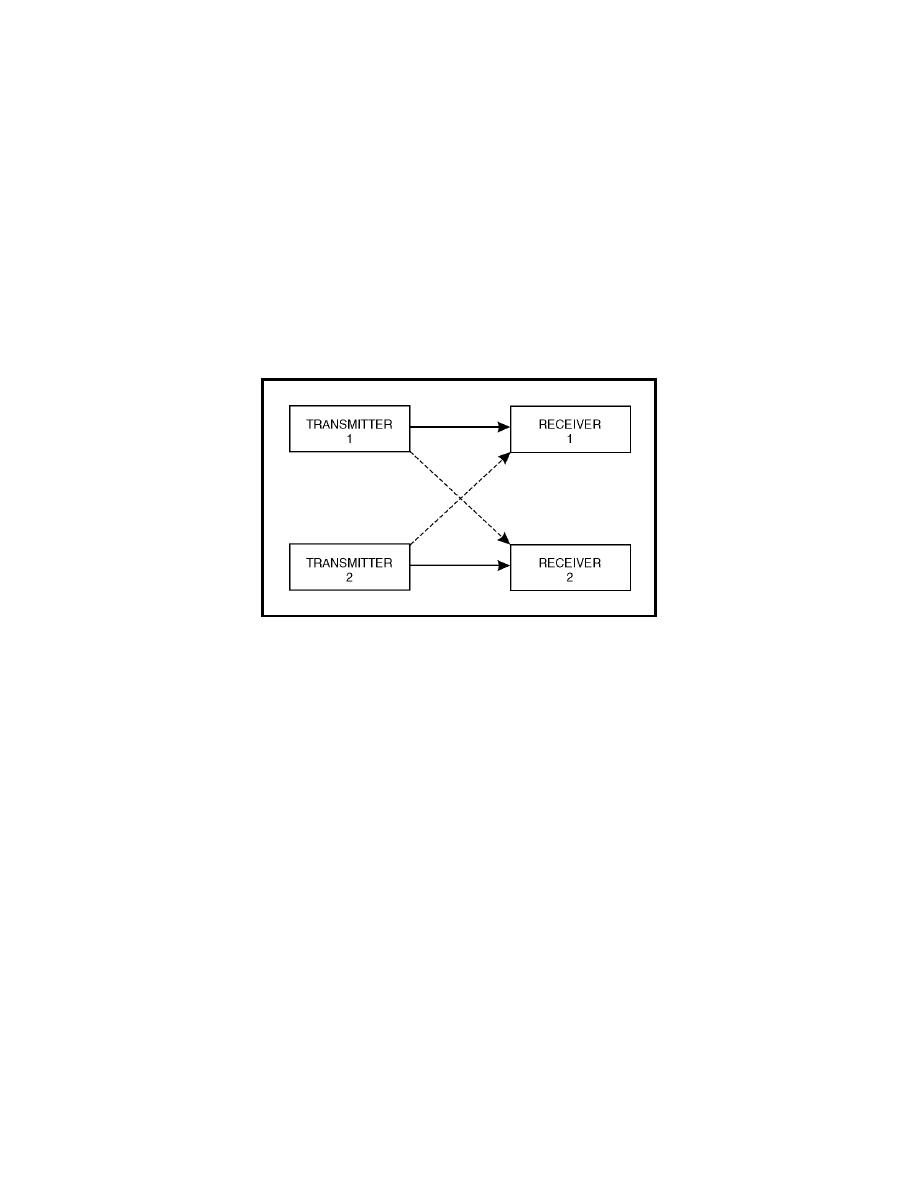
_______________________________________________________________________ Antennas
Directivity and Interference
4-112. In many applications, sharp directivity is desirable although no need
exists for added gain. Examine the physical disposition of the units shown in
figure 4-24. Transmitters 1 and 2 are sending information to receivers 1 and
2, respectively, along the paths shown by the solid arrows. The distance
between transmitter 1 and receiver 1 or between transmitter 2 and receiver 2
is short and does not require high-power transmission. The antennas of the
transmitters propagate well in all directions. However, receiver 1 picks up
some of the signals from transmitter 2, and receiver 2 picks up some of the
signals from transmitter 1, as shown by the broken arrows. This effect is
emphasized if the receiving antennas intercept energy equally well in all
directions.
Figure 4-24. Directivity and Interference
4-113. The use of highly directional arrays as radiators from the
transmitters tends to solve the problem. The signals are beamed along the
paths of the solid arrows and provide very low radiation along the paths of
the broken arrows. Further improvement along these lines is obtained by the
use of narrowly directed arrays as receiving antennas. The effect of this
arrangement is to select the desired signal while discriminating against all
other signals. This same approach can be used to overcome other types of
radiated interference. In such cases, preventing radiation in certain
directions is more important than producing greater gain in other directions.
4-114. Look at the differences between the field patterns of the single-
element antenna and the array, as illustrated in figure 4-25. View A shows
the relative field-strength pattern for a horizontally polarized single antenna.
View B shows the horizontal-radiation pattern for an array. The antenna in
view A radiates fairly efficiently in the desired direction toward receiving
point X. It radiates equally as efficiently toward Y, although no radiation is
desired in this direction. The antenna in view B radiates strongly to point X,
but very little in the direction of point Y, which results in more satisfactory
operation.
4-33



 Previous Page
Previous Page
